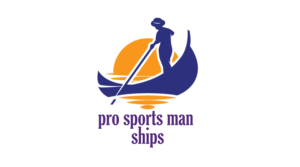Agile Project Management Training, specifically the AgilePM Course, is pivotal for professionals seeking dynamic skills in project management. The course offers comprehensive insights into Agile methodologies and their application in real-world project scenarios.
Understanding Agile Project Management
Agile Project Management embodies flexibility and adaptability, ensuring swift responses to changing project needs. It emphasizes iterative development and customer collaboration.
Significance of AgilePM Certification
Obtaining an AgilePM certification is crucial for individuals looking to bolster their project management skills. It showcases expertise in Agile methodologies, a vital asset in today’s competitive market.
AgilePM Course Components
The Agile Project Management Course includes modules covering agile frameworks like philosophy, principles, lifecycle and roles & responsibilities. These components foster an understanding of iterative approaches in managing projects efficiently.
Benefits of Agile Project Management in Business
Implementing Agile methodologies in business environments leads to improved project outcomes, increased customer satisfaction, and heightened adaptability, fostering success in a competitive market.
Selecting the Right AgilePM Training Program
Choosing the ideal AgilePM training program involves considerations such as the course content, accreditation, and alignment with career goals.
Selecting the right AgilePM training program is a crucial decision for professionals seeking to enhance their project management skills. When choosing a program, it’s essential to consider several factors. Content relevancy, accreditation, and alignment with career goals are pivotal. A comprehensive curriculum covering agile methodologies, project lifecycle, and practical applications is a significant determinant.
Furthermore, certification recognition and industry alignment are paramount in validating the program’s credibility. Understanding the teaching format, whether online or in-person, is vital as it influences the learning experience. Ultimately, choosing a program that harmonizes with individual career aspirations ensures the most beneficial AgilePM training.
Online vs. In-person AgilePM Training
Both online and in-person training formats have distinct advantages. Online training offers flexibility, while in-person sessions provide a more immersive learning experience.
Online and in-person AgilePM training have distinct benefits catering to different learning preferences. Online training offers flexibility, enabling participants to learn at their own pace and convenience, making it suitable for busy professionals. It provides access to resources and materials from anywhere, promoting a self-paced learning environment. In contrast, in-person training fosters a more interactive and immersive experience.
It allows direct engagement with instructors and peers, encouraging real-time discussions and hands-on activities. The choice between the two depends on individual learning styles and preferences, with each format offering unique advantages tailored to diverse needs in Agile Project Management training.
AgilePM Training Best Practices
The effective application of AgilePM requires active participation, collaborative teamwork, and the utilization of Agile principles in practical scenarios.
Agile Project Management (AgilePM) training thrives on specific best practices crucial for successful implementation. Active participation and collaboration among team members are foundational, ensuring continuous feedback loops and iterative development. Embracing Agile principles in practical scenarios drives effective problem-solving and decision-making. Encouraging open communication and transparency within teams fosters a culture of trust and adaptability, crucial in dynamic project environments.
Regularly refining and optimizing processes based on feedback enhances project outcomes. Engaging with case studies and hands-on exercises during training sessions significantly reinforces comprehension and application of Agile methodologies, ultimately enhancing project management practices.
Challenges in Agile Project Management Implementation
Common challenges in AgilePM implementation involve adapting to iterative approaches and cultural changes. Overcoming these hurdles demands a proactive and flexible mindset.
Future Trends in AgilePM Training
The future of AgilePM anticipates evolving methodologies, personalized learning experiences, and an increased emphasis on adaptability and responsiveness in project management.
Conclusion
Agile Project Management Training, particularly through the AgilePM Course, is a cornerstone in the modern world of project management. Embracing Agile methodologies paves the way for successful project outcomes and organizational growth.

